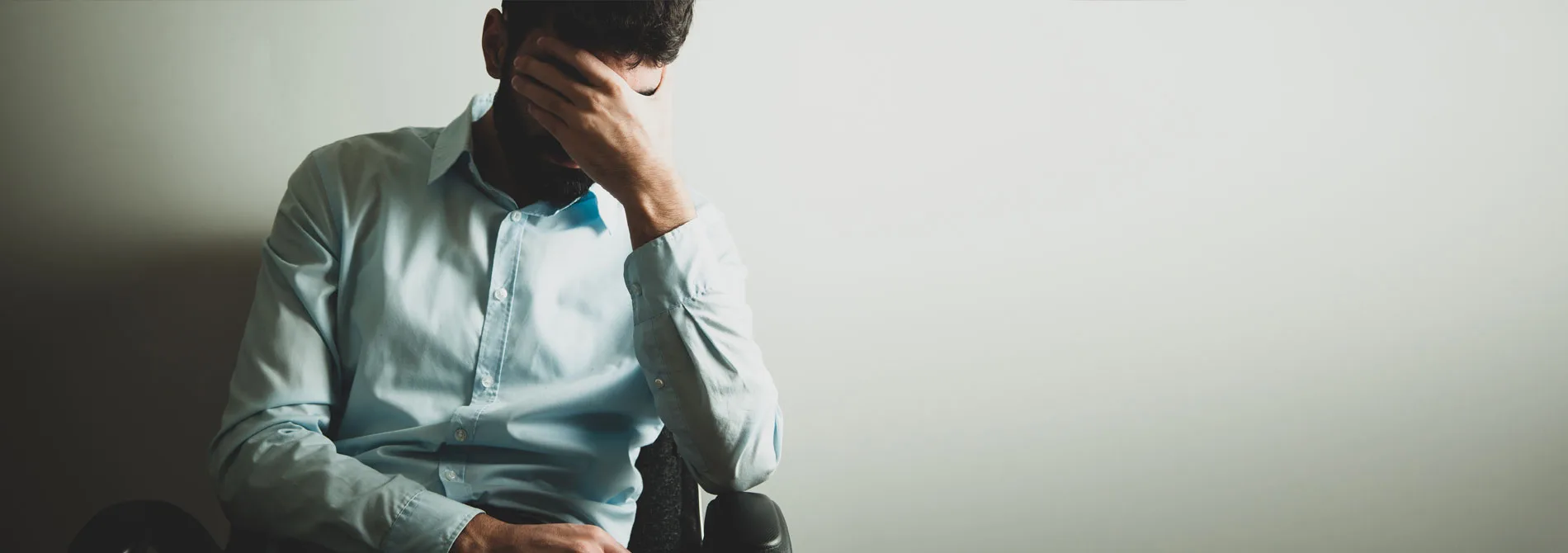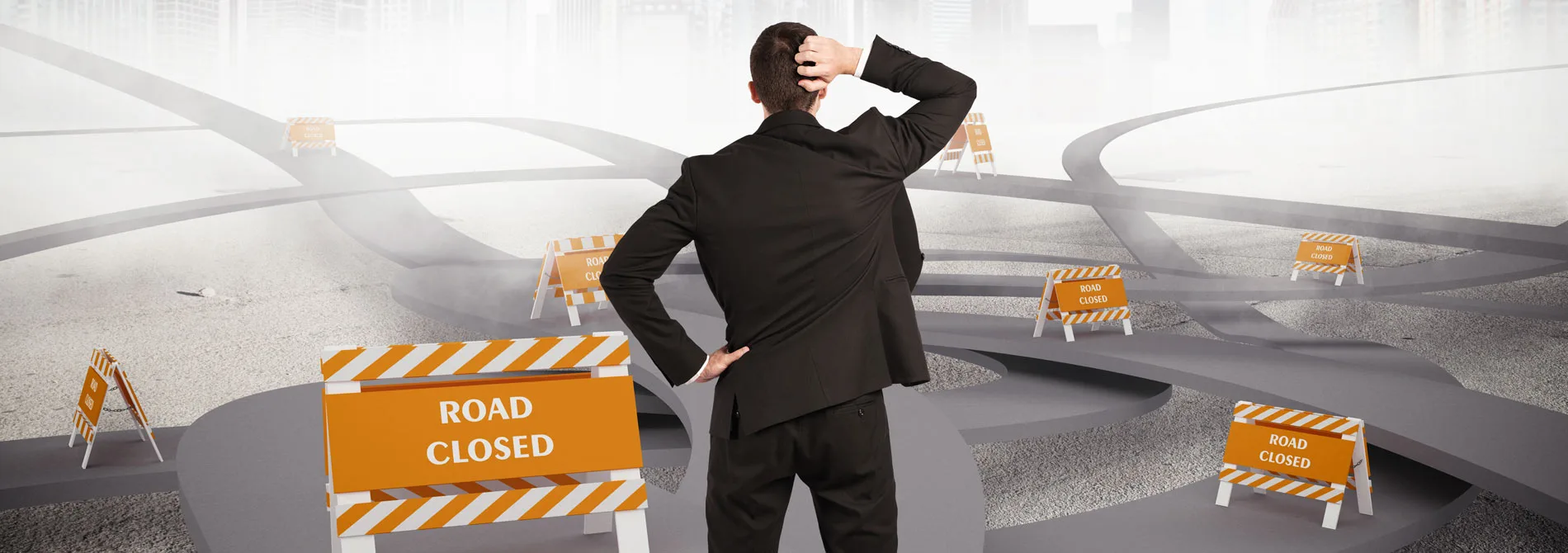Dr. John Dyben, DHSc, MCAP, CMHP | Chief Clinical Officer
Let’s call him Kenneth.
He was a good therapist and a good person. He had spent the past ten years helping patients with addiction and mental health problems in a residential treatment center and he was valued by the patients he treated and the team he worked with.
And something was changing.
Slowly, but perceptibly, he was feeling more and more detached from his work and even from himself. He was tired all the time, and though he joked that he was getting old, he knew there was more to it. Irritation and annoyance increased while passion and satisfaction decreased. He began to feel like his work meant nothing and had a hard time even feeling like his patients could ever get better. He started to feel like a hamster on a wheel.
Finally, he walked into his supervisor’s office and quit his job feeling defeated and like he was a failure.
Kenneth was suffering from professional burnout, and all of us who care about anyone or anything are at risk of the same.
Psychologist Erich Fromm famously stated, “One cannot be deeply responsive to the world without being saddened very often.” In other words, if you care about anything in this world, it will affect you. The more you care, the more you will be affected.
Many professions such as medicine, nursing, counseling, social work, clergy, and others that involve helping people bring an increased risk for professional burnout because the nature of the work necessarily involves caring that [i]. Compassion fatigue can be thought of as a satisfaction imbalance where the caregiver is expending energy on others but not replenishing their energy for themselves[ii]. Think of a laptop computer when it is plugged in to a power source. It uses energy, but it also is having energy replenished. If you unplug it, it will work fine for a bit, but eventually it will run out of energy and stop working. Humans are the same. We can sustainably spend a lot of energy on others as long as we have ways to replenish our energy.
When energy is only going out and not coming in, a shut-down becomes inevitable.
Another factor that can lead to burnout in helping professionals is known as vicarious trauma. This phenomenon occurs when professionals have working relationships with patients or clients who have experienced trauma and these experiences are shared in the process[iii]. Repeated exposure to others’ traumatic experiences can actually cause counselors and other helping professionals to develop symptoms that mimic those associated with post-traumatic stress disorder. These symptoms can then increase the professional’s overall stress which just drains that battery faster and faster.
In addition to work environments that can be fertile soil for developing compassion fatigue and vicarious trauma, the past two years have heaped on high levels of stress and trauma through global health crises, financial instability, and political vitriol. This ubiquitous elevation of stress has been demonstrated to be yet another factor that increases helping professionals’ risk of burnout[iv].
While it may seem like a grim picture being painted, the reality is that there are ways to protect oneself from professional burnout.
There are ways to “keep the laptop plugged in” and bring care and passion to our work and our relationships while staying healthy—and it must begin with the realization that while giving care to others, I must replenish care for myself. There are many ways to accomplish this but any of them must start with a firm belief that self-care is relevant and important and not something that one can afford to let go of.
A useful place for anyone to start the process of beginning to protect themselves from burnout is to honestly assess how much they are already experiencing. There are several measurements that one can take such as the Maslach Burnout Inventory (MBI)[v], Counselor Burnout Inventory (CBI)[vi], and the Single Item Questionnaire[vii] that simply asks: “Overall, based on your definition of burnout, how would you rate your level of burnout?”
So, take a second…pause…consider it.
How would you answer that question and, perhaps even more importantly, what does it feel like to even pause and think about it?
Don’t read more yet. Take just a bit longer with the question.
Maybe add some questions: “What inspires me about my work?” “When was the last time I felt proud in the work that I do?” “Why do I do this?” “Who would say they are better off because of the work I do?”
As you think and feel, consider how these thoughts and feelings compare to how you have felt at other times. If you were to place yourself on a scale with complete life satisfaction on one end and absolute crisp toast burnout on the other, where would you be?
Fortunately, no matter where you find yourself, the discipline of self-care has been demonstrated to be both prevention from and treatment for professional burnout.
There are many tools available for self-care.
Taking short breaks from work, engaging faith or other support groups, practicing meditation, maintaining .
Task-Oriented Self Care (TOSC) is an innovative approach for helping to prevent burnout that has been demonstrated to be both helpful and realistic for busy professionals[viii]. TOSC involves the intentional planning and mindfully engaging an activity that one enjoys and is not related to one’s work. The steps look like this:
- Recognize the need for self-care and set an intention that you will engage an activity just for that purpose.
- Choose something that is not related to your work and, if you can, choose something that is outside of your normal comfort zone.
- Prepare for the task by knowing the steps you will be taking and collecting any supplies you might need.
- Engage the task mindfully. Pay attention to your experience, the sights, smells, feelings, sounds. Connect to the experience and life in the moment.
TOSC can include a wide range of activities and timeframes.
It may be cooking a meal, building a model, cleaning an apartment, planting a garden… you get the idea. The point is that it begins with a conscious acknowledgement that self-care is worthwhile and going to happen. It involves planning and maybe even trying something out of your comfort zone. Finally, whatever you do, you do it as mindfully as you can, allowing yourself to remain present in the moment for the duration of the task.
Try this practice at least weekly for two months and then go back to those assessment questions.
How does it impact your answers? Your feelings?
Recognizing the risks of professional burnout and developing a discipline of self-care for both prevention and treatment can help lead to a more sustainable practice of working with, living with, and caring for others.
As for Kenneth, he found this to be true, developed the self-care discipline, and returned to the work of a psychotherapist with a greater balance and enjoyment of the work than he had ever known before.
[i] Jilou, V., Gabriel Duarte, J. M., Aparecida Gonçalves, R. H., Vieira, E. E., & de Assis Simões, A. L. (2021). Fatigue due to compassion in health professionals and coping strategies: a scoping review. Revista Brasileira de Enfermagem, 74(5), 1–10. https://doi.org/10.1590/0034- 7167-2019-0628
[ii] Sacco, T. L., Ciurzynski, S. M., Harvey, M. E., & Ingersoll, G. L. (2015). Compassion Satisfaction and Compassion Fatigue Among Critical Care Nurses. Critical Care Nurse, 35(4), 32-44 13p. doi:10.4037/ccn2015392
[iii] Deaton, J. D., Wymer, B., & Carlson, R. G. (2021). Supervision Strategies to Facilitate Vicarious Post Traumatic Growth Among Trauma Counselors. Journal of Counselor Preparation & Supervision, 14(4), 1–26.
[iv] Whitt-Woosley, A., Sprang, G., & Eslinger, J. (2022). The impact of COVID-19 and experiences of secondary traumatic stress and burnout. Psychological Trauma: Theory, Research, Practice, and Policy, 14(3), 507–515. https://doi.org/10.1037/tra0001183
[v] Maslach, C., Jackson, S. E., Hough, H., Proeschold-Bell, R. J., Liu, X., Weisner, C., Turner, E. L., & Yao, J. (2019). Maslach Burnout Inventory. Pastoral Psychology, 68, 171–193.
[vi] Lee, S. M., Baker, C. R., Cho, S. H., Heckathorn, D. E., Holland, M. W., Newgent, R. A., Ogle, N. T., Powell, M. L., Quinn, J. J., Wallace, S. L., & Yu, K. (2007). Development and initial psychometrics of the Counselor Burnout Inventory. Measurement and Evaluation in Counseling and Development, 40(3), 142.
[vii] Dolan, E. D., Mohr, D., Lempa, M., Joos, S., Fihn, S. D., Nelson, K. M., & Helfrich, C. D. (2015). Using a single item to measure burnout in primary care staff: a psychometric evaluation. Journal of general internal medicine, 30(5), 582–587. https://doi.org/10.1007/s11606-014-3112-6
[viii] Plath, A. M., & Fickling, M. J. (2022). Task-oriented self-care: An innovative approach to wellness for counselors. Journal of Creativity in Mental Health, 17(1), 55–66. https://doi.org/10.1080/15401383.2020.1842274




